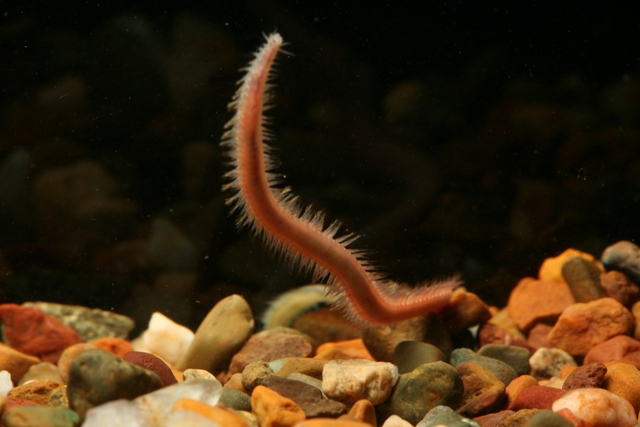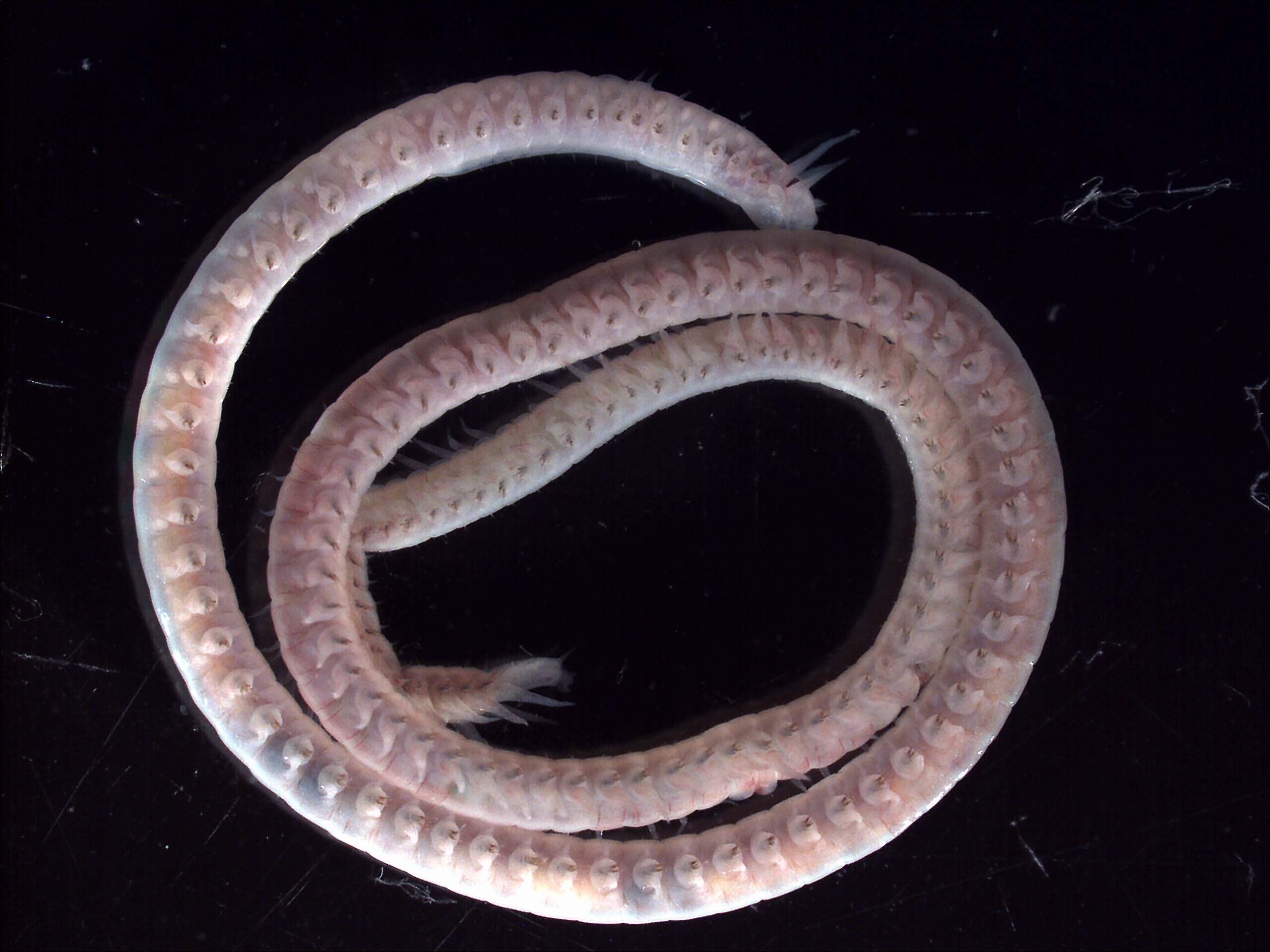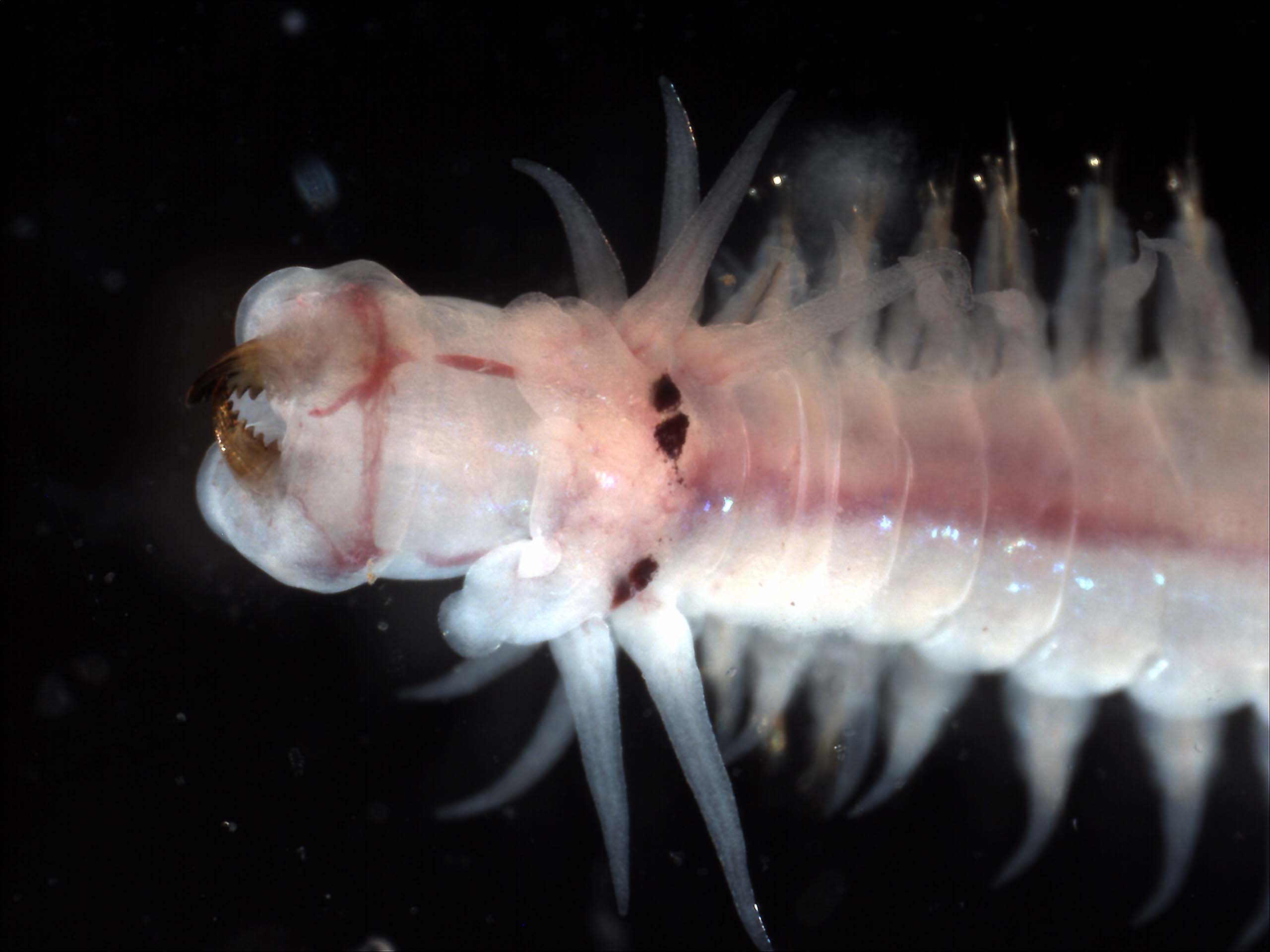Phylum Annelida
Class Polychaeta
Family Nereididae
Common names: freshwater and arboreal polychaetes, rag worms
Overview
Nereididae is a large (mostly marine) family with the greatest diversity of freshwater polychaetes. The peristomium (area around the mouth) is fused with the prostomium (first body segment) and usually has a pair of short antennae between a pair of jointed palps with stout bases, followed or surrounded by two pairs of tentacular cirri. There are usually two pairs of large eyes however many freshwater species are eyeless, particularly those associated with groundwater and caves. They have an eversible pharynx with one pair of lateral, forcep-like jaws with black chitinous denticles (teeth) called paragnaths that are useful taxonomically. Compound (tuft-like) setae (hairs) are usually present. Parapodia are mostly biramous (branched); only the first two pairs are uniramous. Most genera have no gills (if present, they are usually branched and arise on mid-anterior segments of body). Nereids are active, swimming worms with some adults reaching up to 300 mm in length and 20 mm thick, although most are about 50-100 mm long with some being much smaller.
Distribution and diversity
Nereididae comprises about 39 genera and 535 species worldwide. Most species are marine, however the family represents the most diverse group of freshwater polychaetes with 55 freshwater species in 17 genera worldwide, mostly from the subfamily Namanereinae. In the Australasian region there are 5 freshwater genera with 15 described species. Namanereis has a Gondwanan distribution inhabiting subterranean karst habitats in New Zealand, Australia, New Guinea, the Arabian Peninsula, Canary Islands and the Caribbean.
Life cycle
The sexes are nearly always separate, however hermaphroditism (simultaneous or protandrous) is known in some estuarine and freshwater species. Their lifespan can typically ranges from 1-3 years and adults typically die after spawning (semelparity). Freshwater species have modified life histories that avoid or minimise the planktonic larval stages seen in marine representatives. Also, in some estuarine and freshwater species, atokous reproduction (producing eggs that hatch into asexual young) and brooding of eggs in burrows or specially constructed tubes is known.
Feeding
Modes of feeding are diverse within the Nereididae. Species may be active predators, herbivores, surface detritus feeders, bottom deposit feeders, omnivores and even suspension feeders (using a mucus net). Feeding behaviour can vary even within and between populations of a single species. Nereids use their muscular, eversible pharynx equipped with a pair of toothed opposing jaws to capture and hold prey, to tear off fragments of algae and decaying matter or to shovel material into the buccal cavity.
Ecology
The range of habitats occupied by Nereididae is among the greatest of any polychaete family. Most are marine (occurring from shallow marine and estuarine habitats to the deep sea), but members of the subfamily Namanereinae may also be found in a diverse variety of freshwater habitats. These include lakes, rivers and creeks, subterranean karst habitats, other groundwater and spring-fed streams and wells. A few species have even adopted semi-arboreal habitats in water-filled tree hollows in tropical forests. In many of these habitats, nereidids are relatively common but are often restricted to a single freshwater system. They are typically benthic (bottom-dwelling), occurring amongst the top layers of gravel or sand, however some live deeper under layers of stone. Marine nereids are relatively well studied, with some even being cultured as fishing bait, but in general, freshwater species are poorly known.

Namalycastis hawaiiensis
an introduced species that turns up in aquaria
Image credit: � Chris Glasby, used with permission

Namalycastis hawaiiensis
an introduced species that turns up in aquaria
Image credit: � Chris Glasby, used with permission

Namalycastis hawaiiensis, head.
An introduced species that turns up in aquaria
Image credit: � Chris Glasby, used with permission









